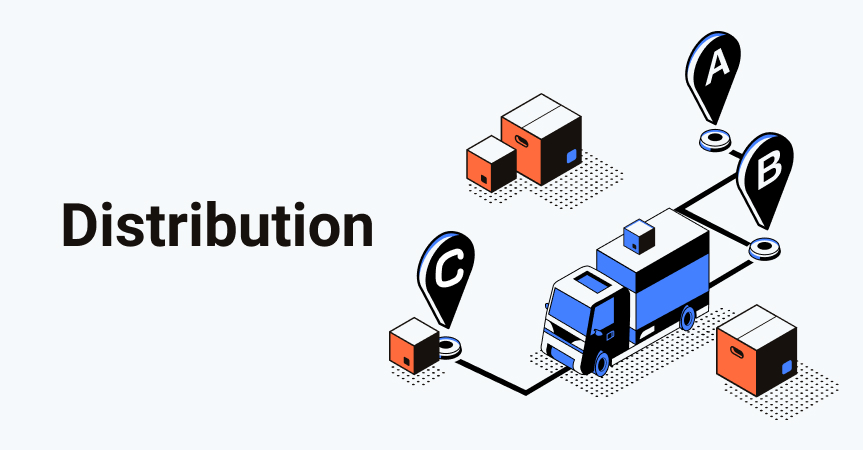Distribution

In dropshipping, much like in any other type of business, suppliers have a very important role. They arrange the delivery of the products to dropshipping store customers. As a result, the suppliers are responsible for the process of order distribution – and ultimately, for the customers’ satisfaction.
What is the distribution?
Product distribution, or simply distribution, is the process of transferring the order from the manufacturer to the customer. Here, the goal is to make sure that online shoppers get their orders quickly, with no damages or mix-ups in their content, and don’t have to overpay for the delivery.
What is distribution management?
Distribution management consists of all the aspects that go into delivering the product from one location to another. Mainly, it consists of:
- Packaging
Safely packaging the products is necessary, so that it doesn’t get damaged during transportation. This is why it is common for dropshipping business owners to contact their suppliers and ask about their customary packaging practice. Also, this presents a great opportunity to check for authentic customer reviews to see what previous buyers think about the quality of the packages. This is exceptionally important for the businesses that dropship fragile, technically complex, or heavy items.
- Order processing
Once a buyer submits an order, the dropshipping store owner needs to redirect it right to the supplier. This way, the original seller’s team that is responsible for distribution will be able to start planning the delivery right away. It’s crucial for cutting down the shipping time and increasing customers’ satisfaction as distribution is a lengthy process involving multiple stages from sorting out the stock to packaging and delivering it in an opportune way.
- Logistics
For every order, the logistics have to be accounted for. In a situation where the products need to be shipped overseas, agreements have to be in place for the product to be transported quickly and without any unexpected issues. Fortunately, dropshipping store owners do not have to make these arrangements – instead, the product supplier handles this task.
- Communication
Communication needs to be established between all parties involved in the transaction of the product. This is a necessary precaution so that everyone involved in the distribution process knows that the right products are shipped and customers are informed about the delivery status. If there are any delays, the people responsible for the shipment need to report the information to all parties involved so that necessary arrangements can be made to fix the problem.
What is E-Distribution?
E-distribution is the process of purchasing digital products like video games, computer software, movies, music, and eBooks, along with other downloadable products and services. If the customers do not receive the purchased product within minutes, after the purchase, they can become quite angry. For this kind of service to be successful, sellers need to instantly provide customers with the purchased product.
Differences between the distributor and wholesaler
It is common for people to mistake distributors for wholesalers. To elaborate on this, usually, a distributor is always in close contact with the manufacturer as this creates the opportunity to sell more products. At the same time, distributors communicate with wholesalers, who in return, resell their products.
On the other hand, a wholesaler рurсhasеs, ѕtоrеs, and dіѕtrіbutеs рrоduсtѕ thеу obtain dіrесtlу frоm mаnufасturеrs. Wholesales work closely with retailers and sell them products in bulk at a discounted price.
Consequently, distributors are an important element of the buying and selling process. They act as a middleman between the customers and the manufacturer. To find the right supplier – and therefore, a distributor – for their businesses, dropshipping store owners are kindly welcome to use the free sellers’ database that contains the information on the most reliable suppliers to partner with.
Product distribution in dropshipping
In the dropshipping business, the supplier takes on the responsibility for managerial tasks, like packaging, storing, and shipping the goods.
On the other hand, tasks that are related to marketing the goods is the responsibility of the dropshipping store owner. He promotes products or services through social media, pay-per-click ads, etc. Essentially, the goal is to bring consumers to the store through different channels of promotion.
When a customer purchases something from the dropshipping store, the store owner will contact the supplier to ship the product. The business owner will purchase the product from the supplier and send him the customer details. Therefore, the dropshipping model helps the suppliers to extend the scope of their product and reach a larger audience.






